
Greene County, PA Harper's Ferry, WV Baltimore and St. Michaels, MD Williamsburg and Jamestown, VA Charlottesville, VA
Skyline Drive (Shenandoah National Park), VA Hartford, CT Old Sturbridge Village, MA
On Monday morning, July 14th, we headed south. Instead of driving back over the Chesapeake Bay Bridge and then heading south to Williamsburg, we decided to drive to the tip of the Delmarva Peninsula and use the Chesapeake Bay Bridge-Tunnel across the mouth of Chesapeake Bay to the Virginia "mainland" near Norfolk, Virginia and then drive a short distance northwest to Williamsburg. You do feel like you're driving into the sea as the peninsula narrows down to a point. John and his parents drove these 20 miles of bridges, tunnels and causeways within a year of its opening in 1964 but he hasn't been back since. We didn't see any ships this time, but John remembers seeing a submarine the first time through. (Norfolk is the home port of the Atlantic Fleet.)
This was also the site of the Battle of the Virginia Capes in which the French Fleet prevented the British Fleet from resupplying or evacuating the land forces near Yorktown in 1781. It was also the area of the 1862 Civil War Battle of Hampton Roads between the USS Monitor and CSS Virginia (originally USS Merrimack)
Colonial Williamsburg (coordinates 37.271427, -76.696536) is an in-situ restoration and re-creation of the 18th century capital of Virginia as a colony and state. It is the successor to Jamestown (in 1699) and predecessor to Richmond (after 1780) in that role. The docents and craftsmen typically describe life and events in the period 1775-1777. About 20% of the buildings in the historic district are original; the remainder including the Governor's Palace and the Capitol are restorations based on contemporary plans, engravings and accounts. It is a private foundation created by John D. Rockefeller Jr., and his wife, Abby Aldrich Rockefeller.
The Capitol is a reconstruction of the first such building on this site. A second building was similar in floor plan but with square end and closed portico also burned down. This building housed the High Court, House of Burgesses (after 1776, House of Delegates), Governor's Council and committee rooms.

John Corbly (remember him?) was elected to the Virginia House of Delegates from what was then Monongalia County, Virginia (later Greene County, Pennsylvania) for the term beginning in December 1776. He had already been appointed Justice of the Peace by Governor Patrick Henry in October 1776. On November 1, 1777 he was excluded from his seat because he was a clergyman. This act was tied up with the issue of separation of church and state -- one of the most important principles being advanced by Thomas Jefferson, a fellow delegate. The Virginia Statute for Religious Freedom (one of Jefferson's three proudest achievements was drafted in 1777, introduced in 1779, and enacted 1786) does not exclude clergymen from public office nor does the First Amendment to the US Constitution. But in reaction to the times, avoidance of any influence by any church or Lords Spiritual prevailed. No doubt Jefferson and Corbly agreed on many points relating to religious freedom and the frontier, but in this case John's ancestor lost his seat to the actions of one of John's heroes from his early years. Nonetheless, it meant more to John on this trip (compared to 50 years ago) to sit in the Capitol knowing that his ancestor once sat there in 1776.

Important note: This is not a shot by us, but a photo by John Ham III in 2006. Our photos using existing light were simply too dark to be shared, though they looked OK in the cameras. We were not able to use flash in some of the buildings.
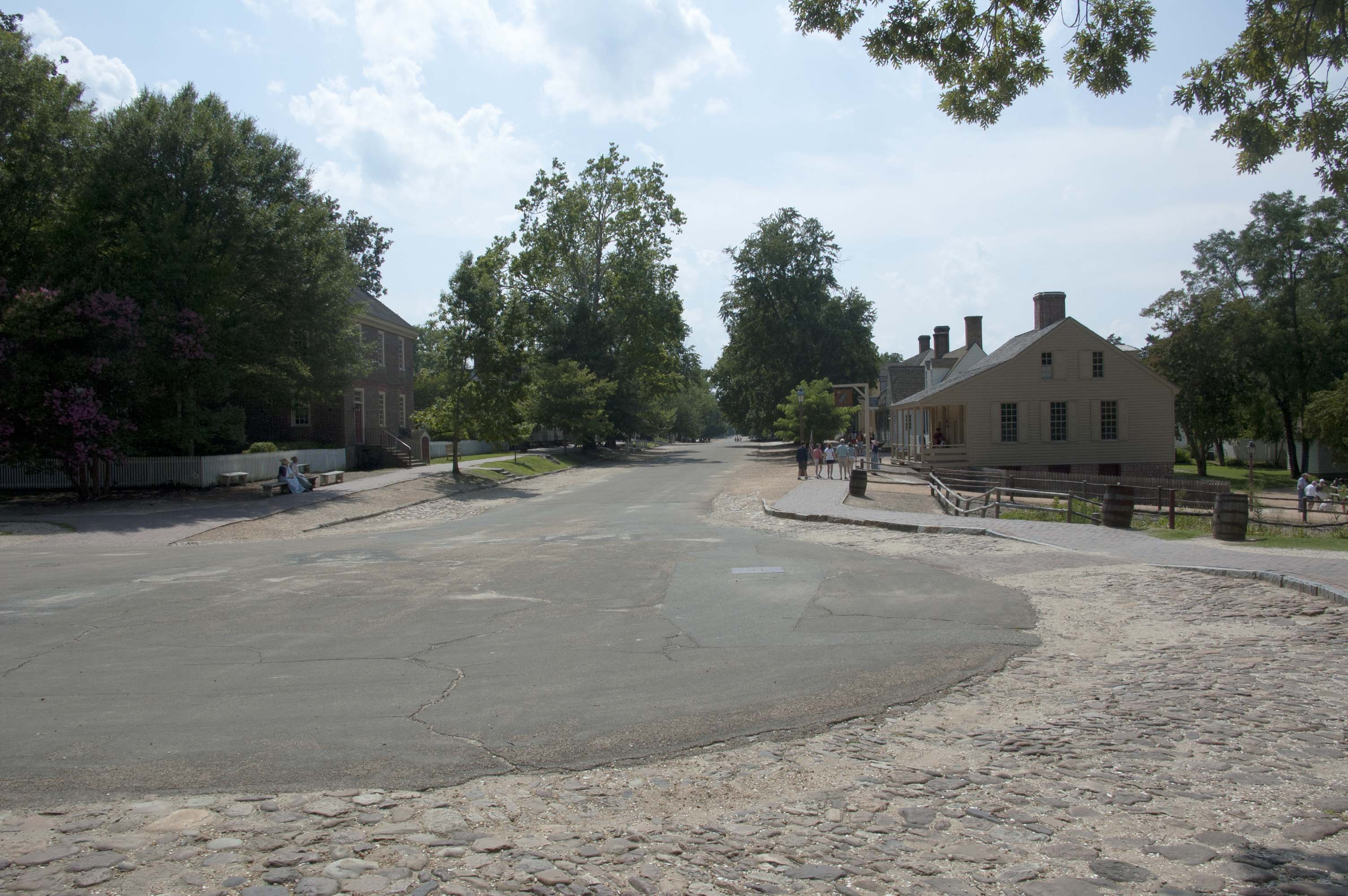
The Duke of Gloucester Street is "main street" for Colonial Williamsburg. It runs about a mile from the Capitol to the College of William and Mary (which was there in the period). It is lined with homes, merchants and craftsmen, and taverns.
The George Wythe House is an original, restored to the original exterior and furnished in period decor. It was the home of George Wythe, first law professor in America, teacher of Thomas Jefferson and other founding fathers and a signer of the Declaration of Independence. It also served briefly as George Washington's Headquarters in the weeks before the siege of Yorktown in 1781.
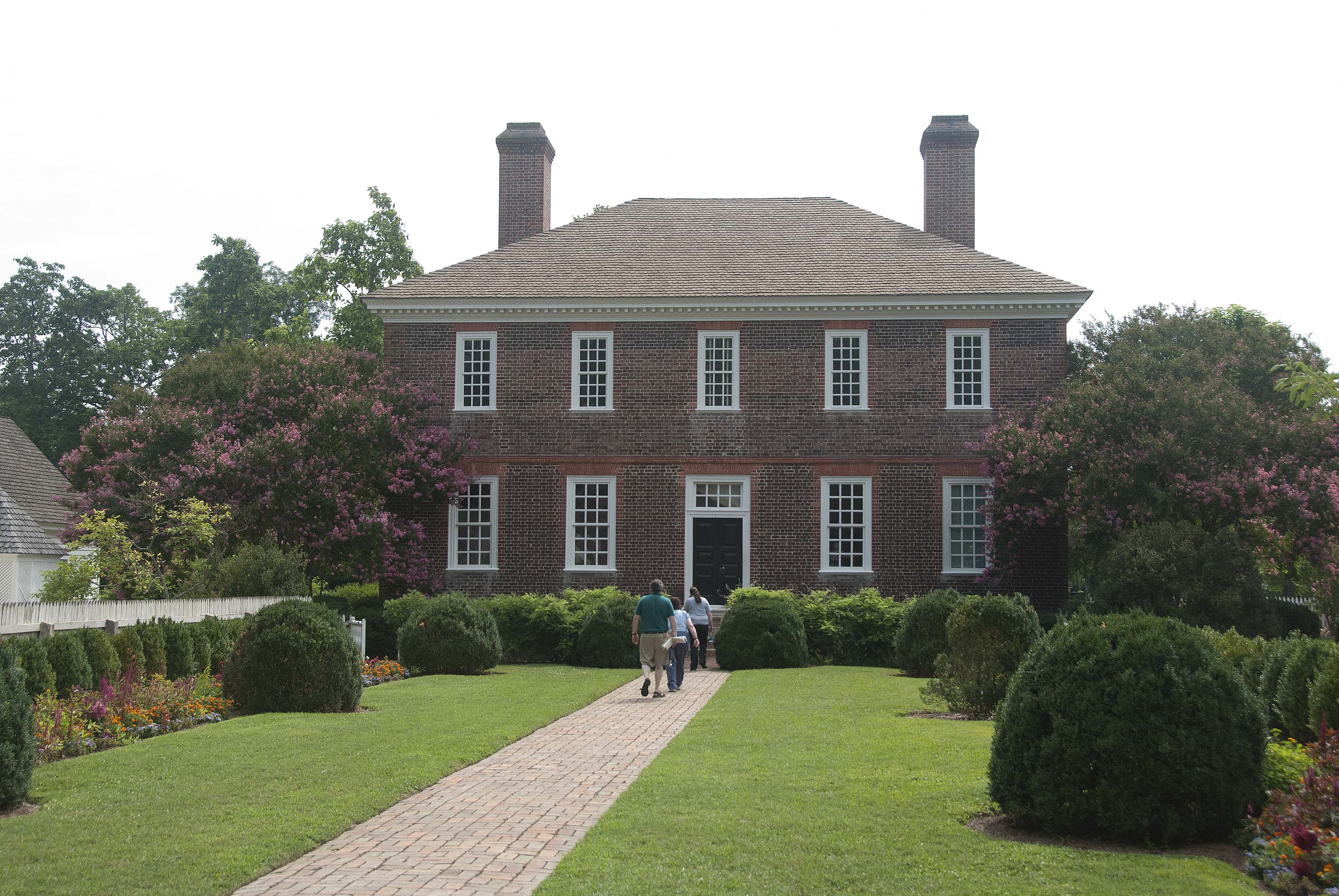
The is the rear/garden view of the Wythe House. The street side is identical but without the garden.
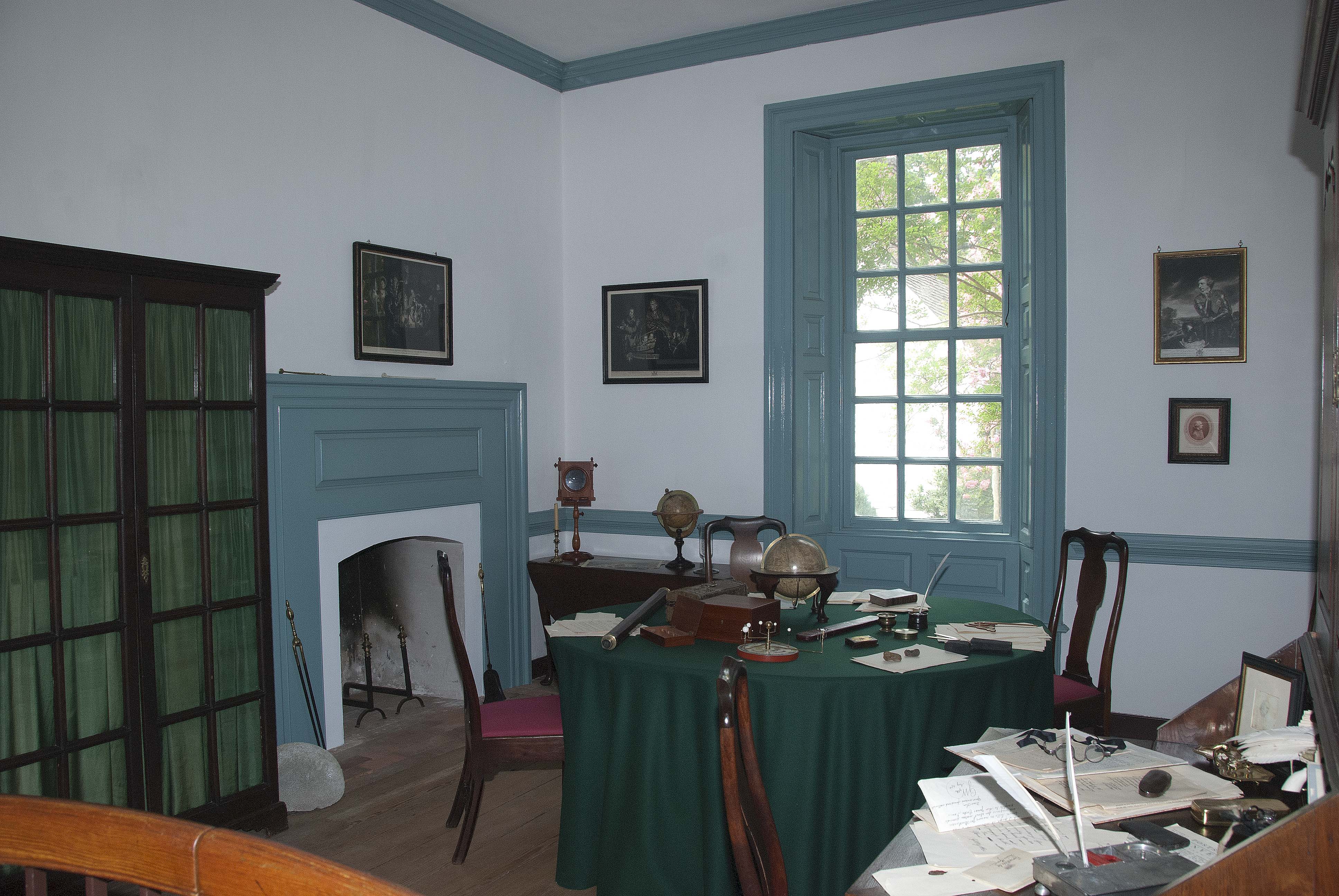
George Wythe's office.
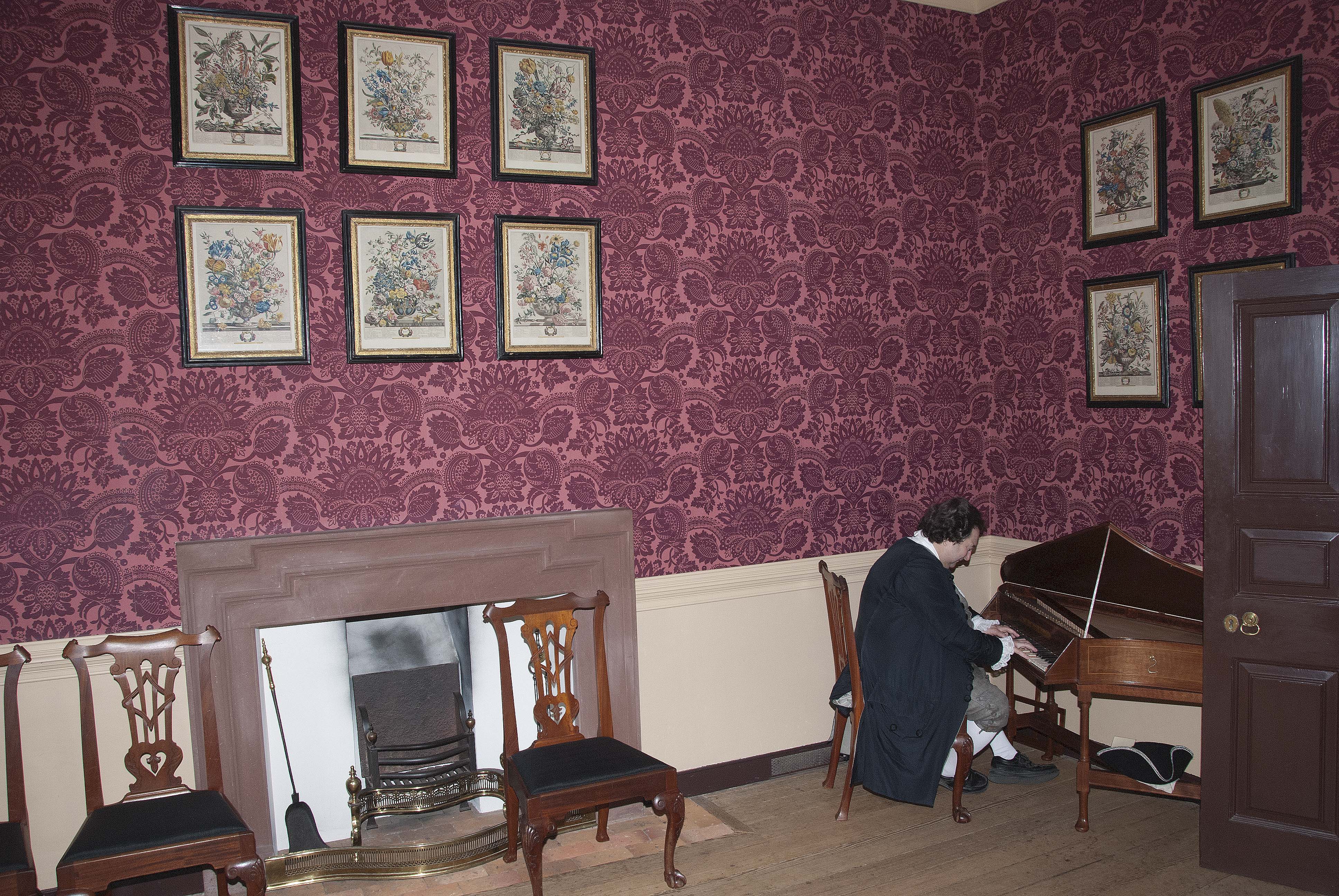
While we were there a harpsichordist was giving a concert and talk, so we sat down to listen. (Besides the house was air conditioned and it was HOT and HUMID outside! The temperature/humidity index THI was 106F/41C both days we were in Wiiliamsburg)
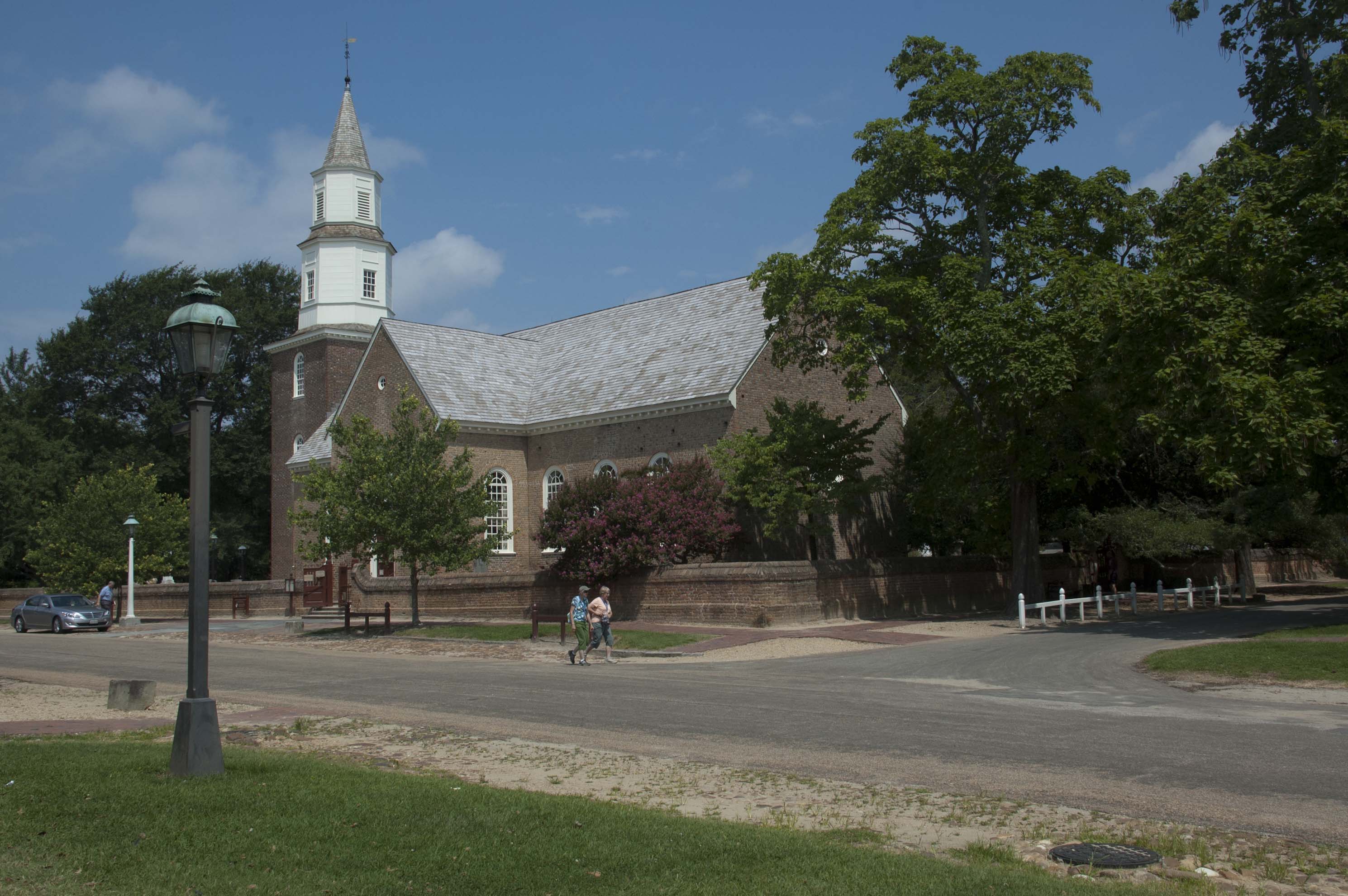
Bruton Parish Church would not have been one of Thomas Jefferson's favorite places in town. As a symbol of the established Church of England receiving tithes assessed on the populace, it was exactly what he was confronting with the separation of church and state. It is still an active Episcopal parish. Bruton Parish Church is also responsible for the reconstruction of Colonial Williamsburg as it was its rector in the 1920s, W A R Goodwin who eventually got the Rockefellers to create the Rockefeller Foundation and begin acquiring properties for restoration and reconstuction.

The Governor's Palace not only served the Royal Governors but the first two "state" governors -- Patrick Henry and Thomas Jefferson. It burned down in 1781 and was reconstructed in the 1930s.
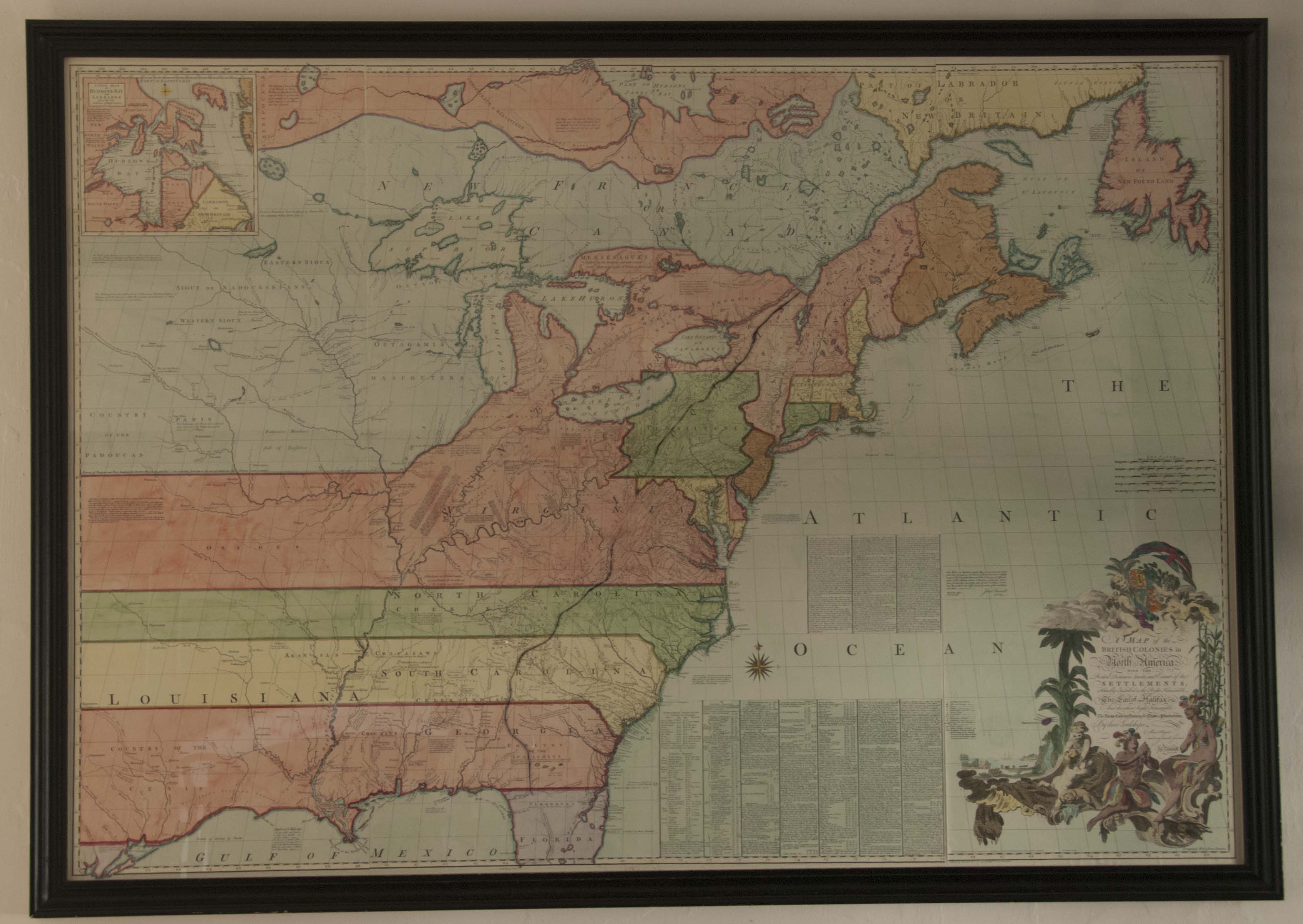

A map showing Virginia's view of the Royal Grants to the colonies. In this interpretation, all or parts of West Virginia, western Pennsylvania, Ohio, Indiana, Michigan, Illinois and Kentucky and all the way to the Pacific Ocean were part of Virginia. No wonder there were boundary disputes!
An upstairs room used for a the nursery.
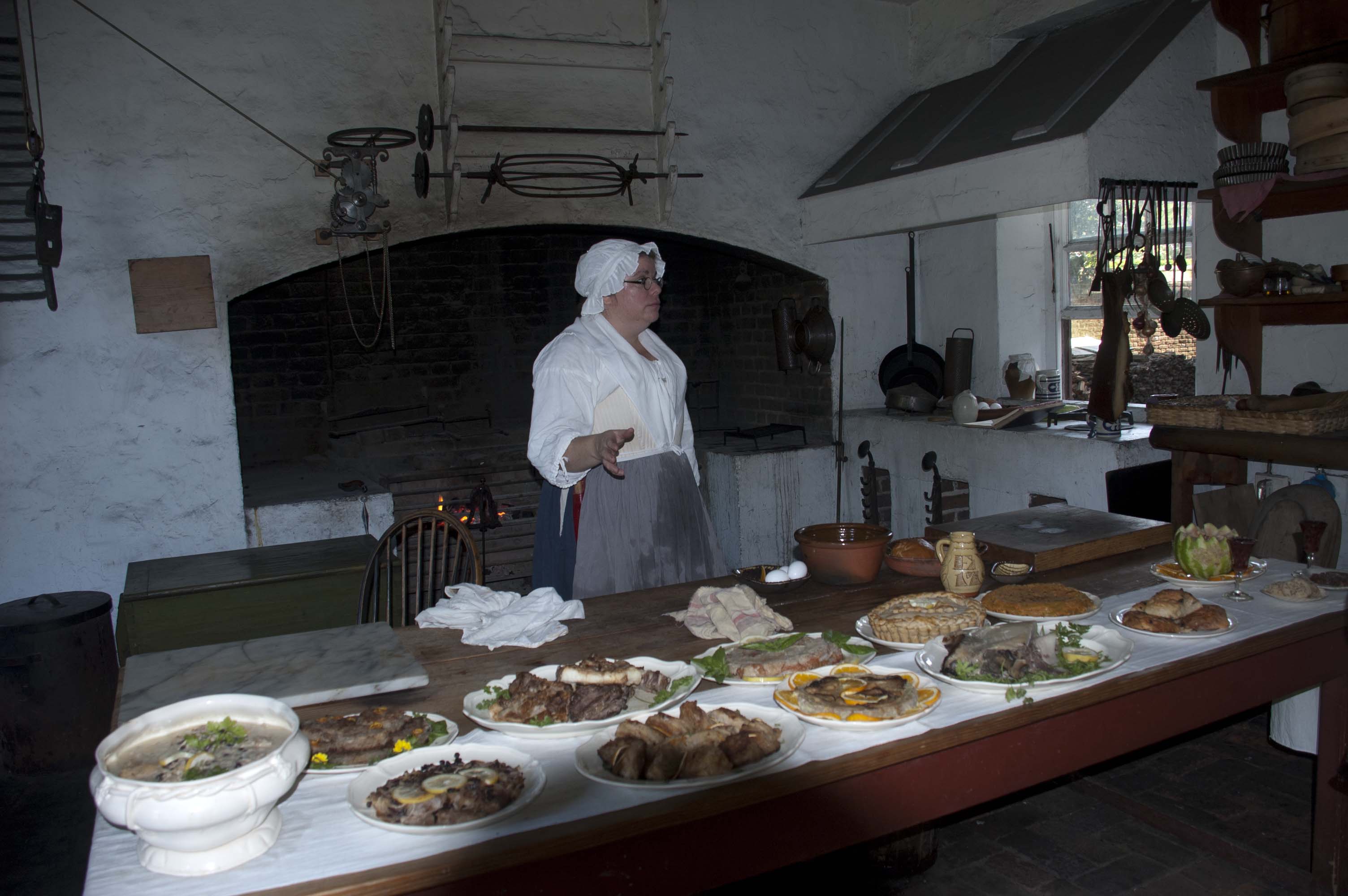
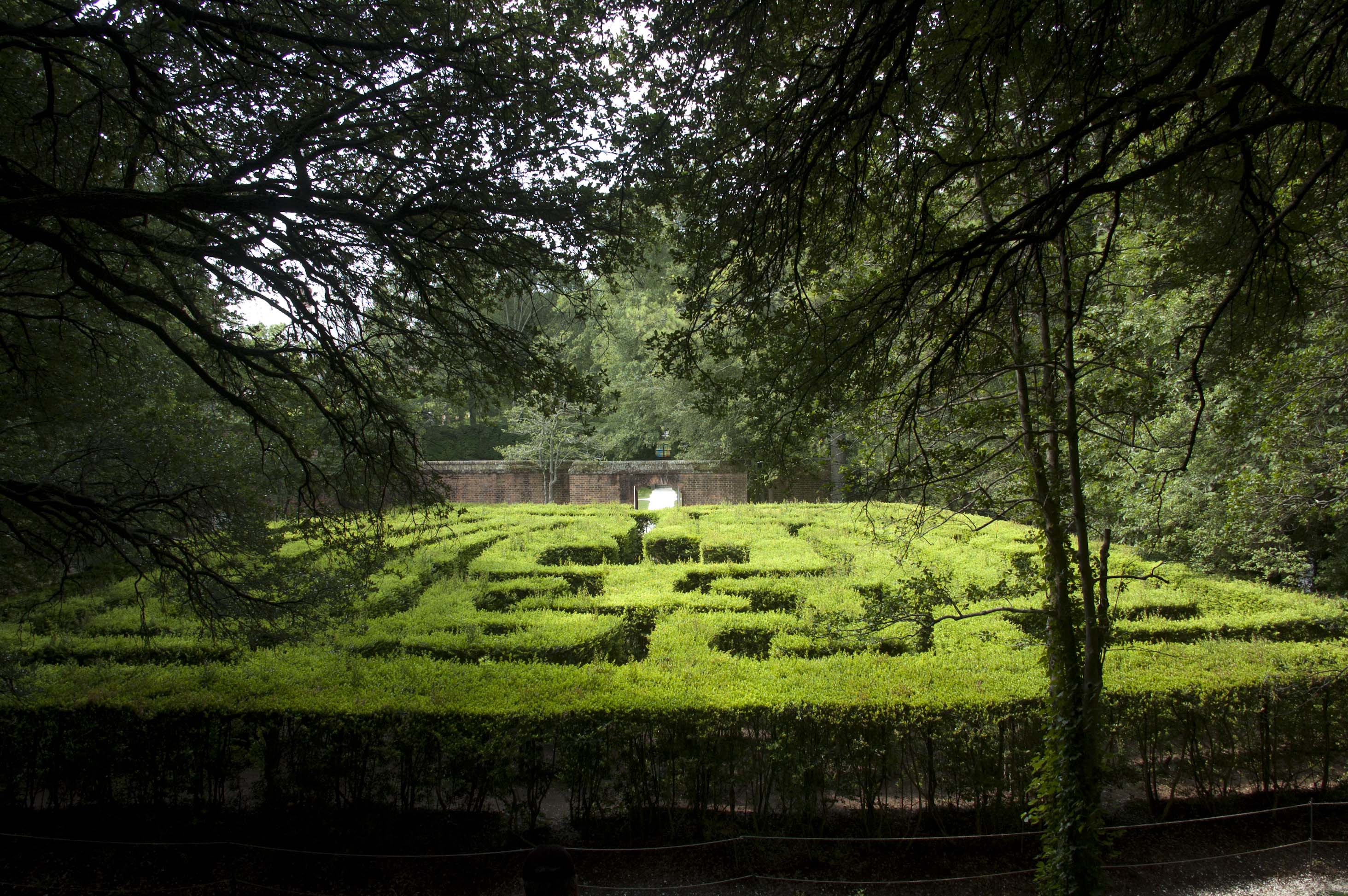
Last night's dinner for the governor -- a lot of courses in a warm climate.
The boxwood garden maze seemed somewhat bedraggled compared to John's memories from the 60s. Maybe it's just the maturity of the plants and the loss of lower structure but it looked like people had just forced themselves through the plants where they couldn't figure out the maze. There are also formal and kitchen gardens.



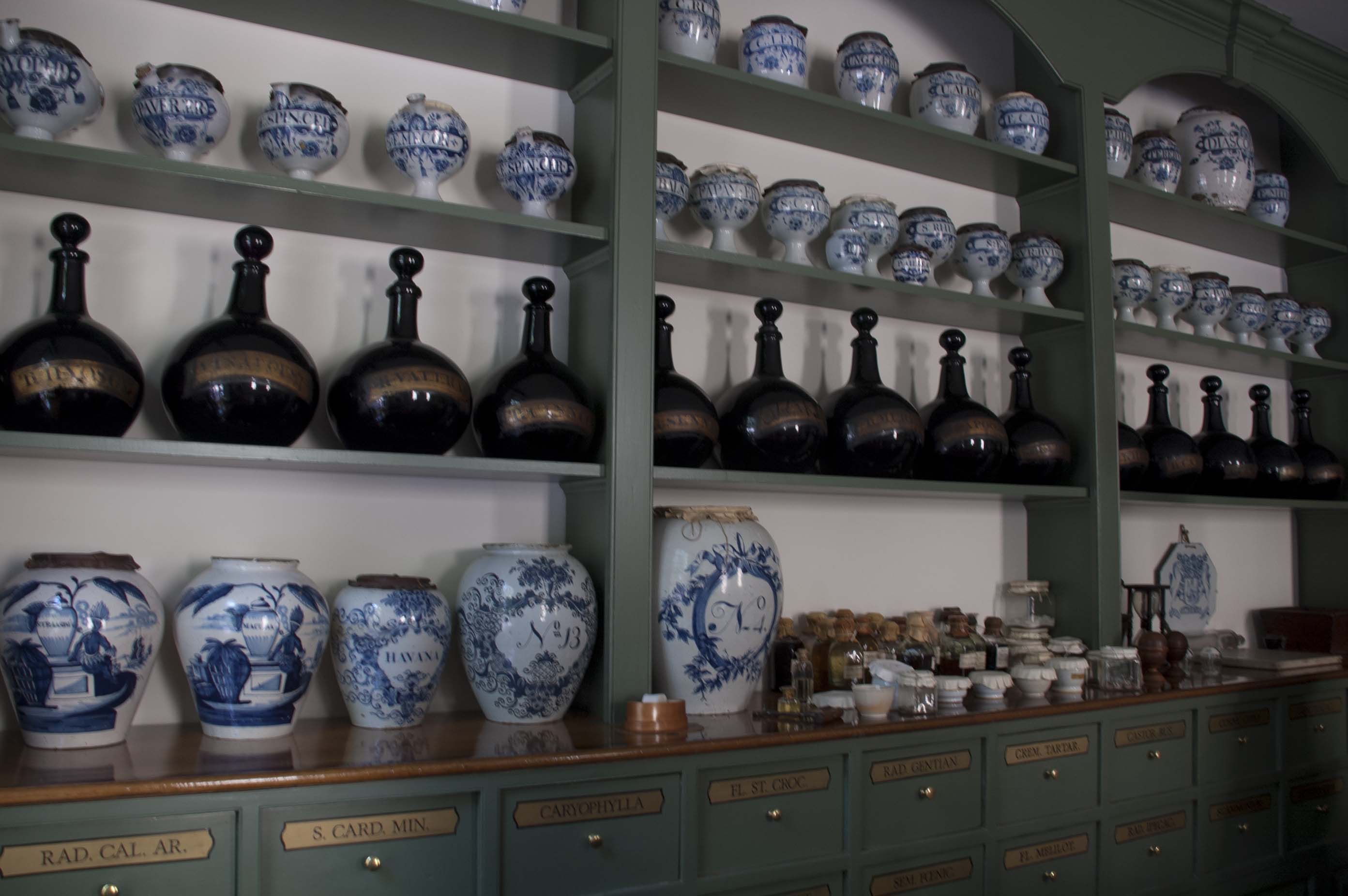
We also went through several craftsmen and merchants buildings -- the armoury, printer, tinsmith, shoemaker, silversmith, apothecary.
We talked with some of the docents (after their tours) and craftsmen. Some are talkative and some are not. Some of the information proved to interesting in comparison with our later visit to Old Sturbridge Village where the same crafts now exhibited changes in the ensuing 1776-1836 interval. For example, the Williamsburg printer had one typeface, Caslon, because everything had to be imported. The Sturbridge printer had multiple typefaces and catalogs from type foundries in Boston and New York where additional faces could be ordered for a special commission. The Williamsburg printer didn't do books (they were only done in England and the Continent and prohibitively expensive), broadsides and advertisements and newspapers were what he printed. By the 1830s, books were what kept the printers busy and advertising etc. was helpful for filling slack periods but not moneymakers. Martin Hood had some experience with John getting involved with docents when Martin took us through the Australian Houses of Parliament in Canberra -- what started as a couple of detailed questions from John soon attracted a small crowd as we compared Australian/British/Canadian/US forms of legislative government.
On Wednesday the 16th, we went to Jamestown, Virginia (about 10 miles away) before heading west again, this time to Charlottesville and Thomas Jefferson's home. Jamestown was the first permanent English settlement in North America in 1607. Following guidelines from their patrons, the Virginia Company of London, they settled where the Native Americans weren't. Of course, this meant they picked just about the worst possible spot -- an island surrounded by brackish water and swamps, no fresh water, little game or space for farming. Attrition was very high from sickness and accidents and in 1609-1610 from starvation and even cannibalism (in the basement on the right where "human remains displaying 8 of 9 traces of cannibalism" were found).



50 years ago, the place looked different and the story presented was VERY different. Until the 1990s, it was thought that virtually all of the first town, Old Town, had washed into the James River. The memorial chapel was there; the foundations of the New Town were there; and the Confederate defenses from the Civil War were there.
Now, however archeology under Dr. William Kelso, Dave Givens and others continues to reveal that 80+% of the original town is still there. Because the settlers are all known, artifacts and human remains can often be confidently attributed to individuals, something that is quite rare.
There is a UK TV Channel Four programme, Time Team, that in 2007 had a special episode "Jamestown -- America's Birthplace" (48 minutes, now on YouTube at http://www.youtube.com/watch?v=_iWfSAQkWR0 or contact John Lucas for a separate file, 490MB MP4). The 1609 well that is the subject of the video has been filled in, but is labeled.

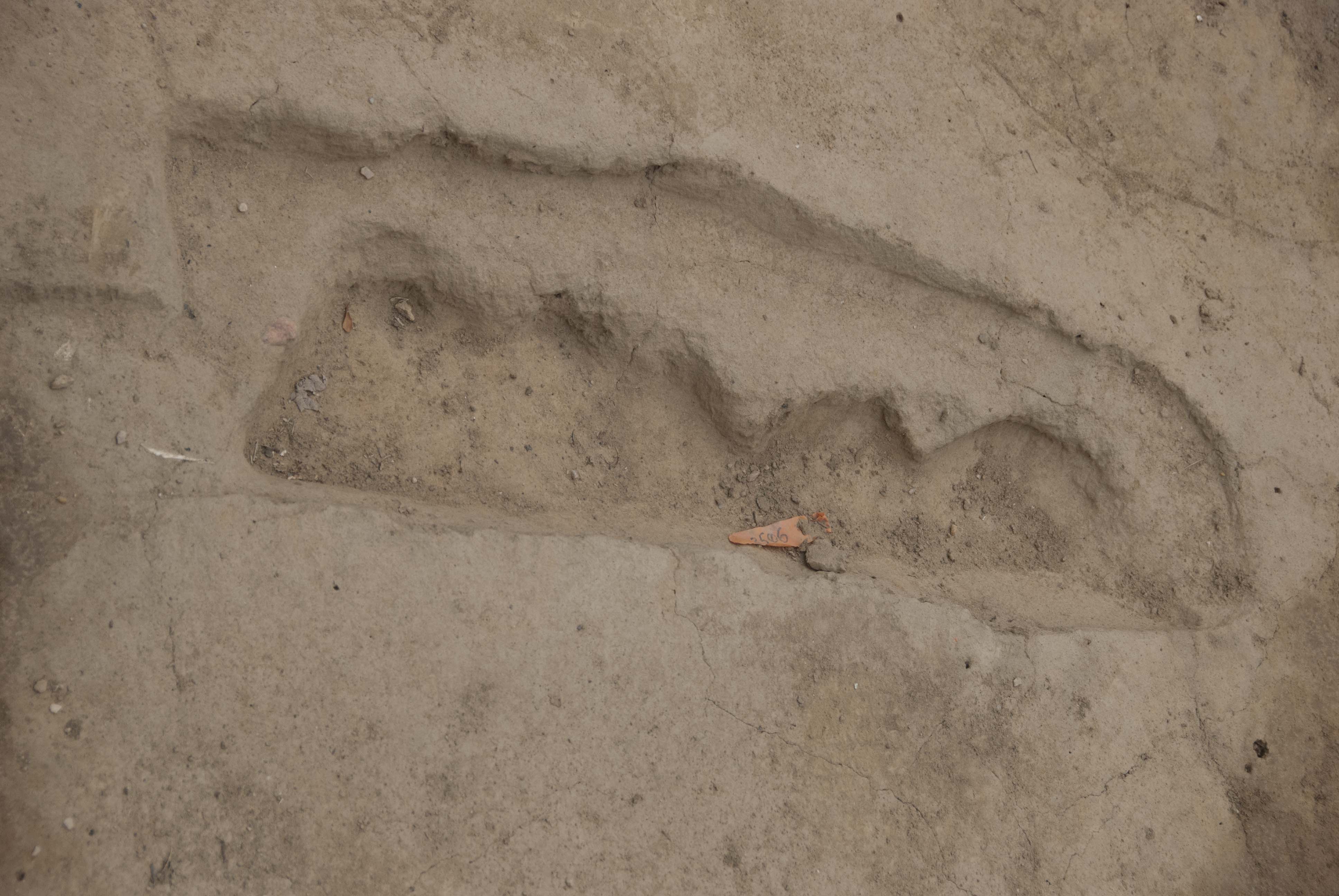
They are still digging. Bill Kelso lives onsite, and Dave Givens gave our Archeological Tour in late morning! We also had a Park Ranger tour and had a chance to talk with some of the volunteers. John has been interested in archeology most of his life, even proposing a course for TheGreatCourses.com, so this was a very special thrill.
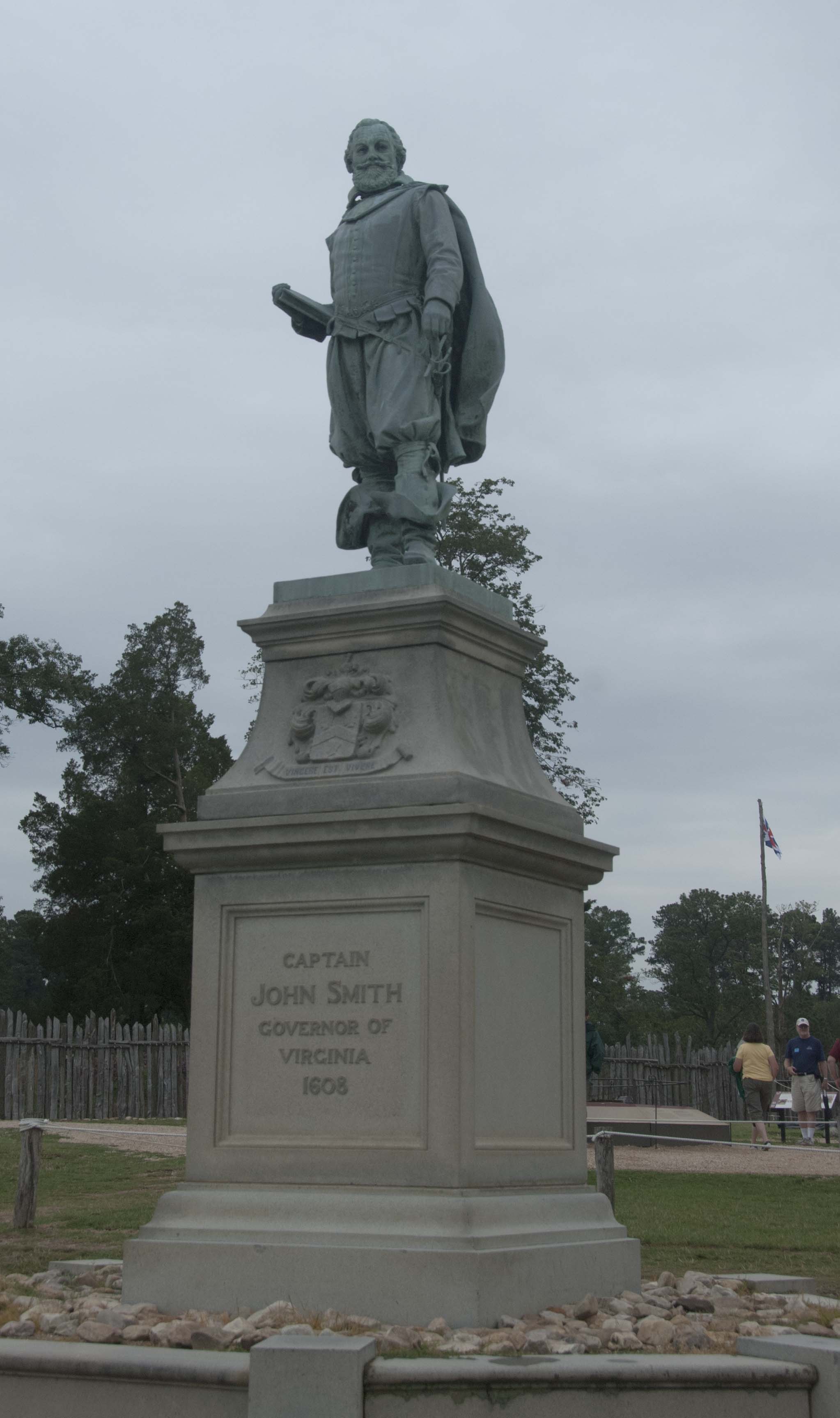

John Smith seems secure where he is, but Pocahontas has to move -- she's standing in a building just outside the landward palisade.